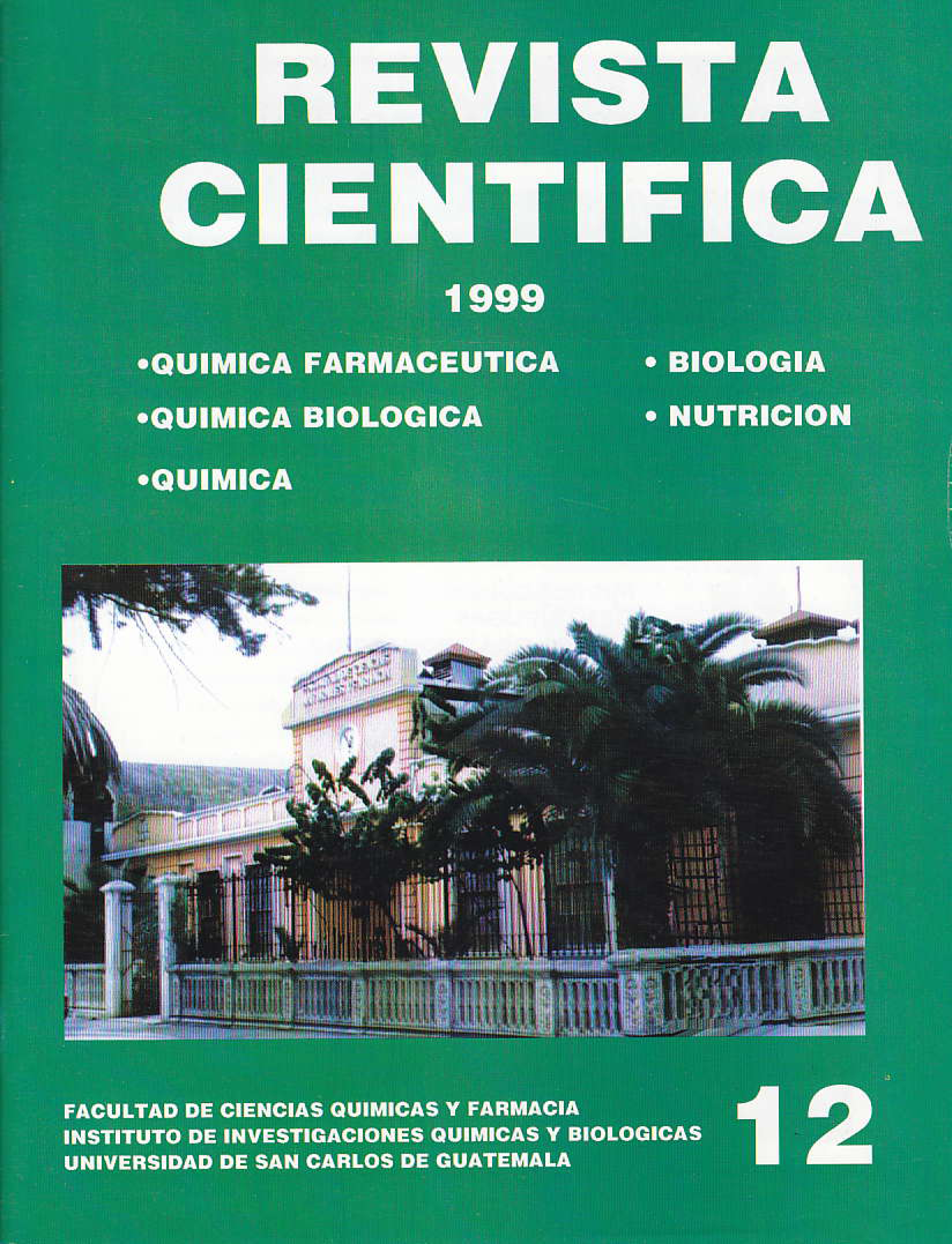Determination of tetracycline residues in chicken meat consumed in Guatemala City
DOI:
https://doi.org/10.54495/Rev.Cientifica.v12i1.340Keywords:
tetracycline residues, chicken meat, Guatemala CityAbstract
The objective of this study was to determine the presence of oxytetracycline and chlortetracycline in chicken breasts from one of the main poultry farms that supply stores in Guatemala City. For this purpose, a reverse phase High Performance Liquid Chromatography (HPLC) method and ultraviolet detection was developed. This method was an adaptation of those described by Y. Onji et al. and by D, Fletouris et al. [2,3], and includes an extraction with HCl and adsorption chromatography with Amberlite WAD-2 prior to HPLC analysis. Three of the 30 samples analyzed showed tetracycline residues; oxytetracycline (0.067 - 0.567 ppm) and chlortetracycline (3.7 ppm) being present in all of them. The three samples presented contents greater than the Maximum Residue Levels acceptable for human consumption (< 0.25 ppm) established by the United States Food and Drug Administration (FDA) [3],Downloads
References
Brackett 5, Delappe I, and Maddock H. Feeding Aureomycin to Poultry. American Cynamid Company, U.S.A. Revised edi tion, (p. 14-29).
Qnji Y. , Uno M and Tanigawa K. Liquid Chromatographic De termination of Tetracycline Residues in Meat and Fish. J. ASSOC. Off. Anal. Chem. 1984; 67(6]: 1135-1136. DOI: https://doi.org/10.1093/jaoac/67.6.1135
Fletouris DJ. Psomas JE, Botsoglou NA. Trace Analysis of Oxytetracyciine and Tetracycline in Milk by High-Perfor mance Liquid Chromatography. J. Agríe.Food Chem. 1990; 38:1913-1917. DOI: https://doi.org/10.1021/jf00100a007
Food and Drug Administration. Residues in Meats. U.S.A.: April, 1994.
Blood DC, el al. Medicina Veterinaria, 6a. ed. Colchero, F. trad. Méxlco: lnteramericana, 1987. (p. 140-141).
Trum Hunter B. Low-level drug residues in food. Consumer's Research Magazine. 1994: 77:4(8-9)
Haresing W, Cole DJA. Recent Advances in Animal Nutrition. London: Butterworth. University of Nottingham School of Agriculture, 1989. (p. 8-9)
Carnevale RA. Illegal residues in meat and poultry. Consumers’ Research Magazine. 1992: 75:1(33-36)
Neu HC. The Crisis in Antibiotic Resistance. Science. 1992; 257:1064-1072. DOI: https://doi.org/10.1126/science.257.5073.1064
COGUANOR NGO 34 170. Concentrados para Animales. Alimentos para Aves. Especificaciones. Comisión Guatemalteca de Normas (COGUANOR), Ministerio de Economía, Guatemala, C.A. 1988. 1 5p. (p. 1, 6).
Downloads
Published
How to Cite
Issue
Section
License
Copyright (c) 1999 Bessie Abigail Orozco Ramírez

This work is licensed under a Creative Commons Attribution 4.0 International License.
Authors who publish with this journal agree to the following terms:
- Authors retain copyright and grant the journal right of first publication with the work simultaneously licensed under a Creative Commons Attribution License 4.0 that allows others to share the work with an acknowledgement of the work's authorship and initial publication in this journal.
- Authors are able to enter into separate, additional contractual arrangements for the non-exclusive distribution of the journal's published version of the work (e.g., post it to an institutional repository or publish it in a book), with an acknowledgement of its initial publication in this journal.
- Authors are permitted and encouraged to post their work online (e.g., in institutional repositories or on their website) prior to and during the submission process, as it can lead to productive exchanges, as well as earlier and greater citation of published work.









